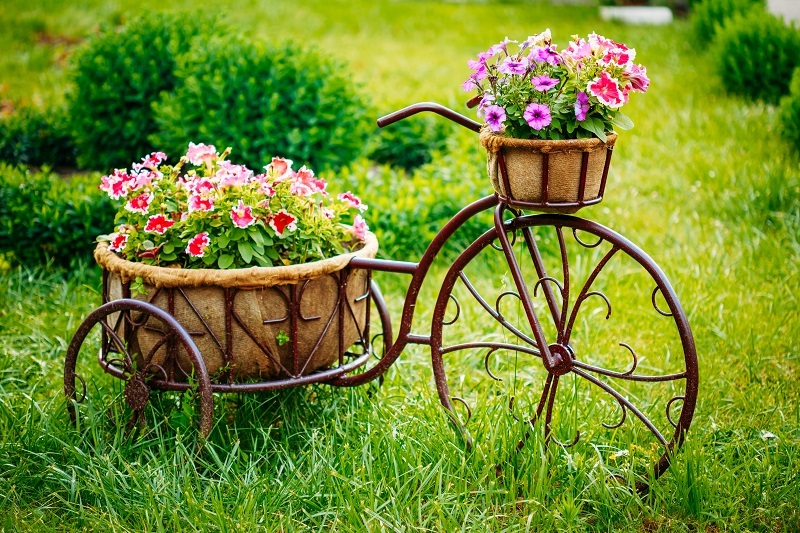Tulip Tidbits: Seven Facts That Will Surprise You
Posted on 25/08/2025
Tulip Tidbits: Seven Facts That Will Surprise You
Tulips are more than just a springtime sensation or a favorite flower for bouquets. Step into the vibrant world of tulips and uncover unexpected stories, colorful history, and fascinating science behind these enchanting blooms. From ancient origins to modern pop culture, discover seven surprising tulip facts that will change how you think about one of the world's most beloved flowers.

The Captivating World of Tulips: A Brief Introduction
Tulips, with their striking cup-shaped blossoms and dazzling color variety, have captivated humans for centuries. Not only do tulips symbolize perfect love and new beginnings, but they also boast a compelling backstory interwoven with drama, wealth, and natural wonder. Whether you are a gardening enthusiast, a history buff, or simply love flowers, exploring these tulip tidbits will enrich your understanding and appreciation for this beautiful bloom.
Tulip Tidbit #1: Tulips Are Not Native to the Netherlands
When you think of tulips, the iconic fields of the Netherlands dotted with vibrant stripes of color likely come to mind. However, the origin of the tulip is far from Dutch. Tulips originate from Central Asia, specifically regions that are now parts of Kazakhstan, Uzbekistan, and surrounding countries.
- The name "tulip" is thought to derive from the Persian word for "turban" because the flower resembles the headwear popular in the region.
- Nomadic tribes and early Persian gardeners cultivated and treasured tulips long before the flower made its way westward.
The journey of tulips across continents and their eventual establishment in Dutch culture is a testament to human fascination with natural beauty.
Tulip Tidbit #2: The Tulip Mania Was the First Recorded Economic Bubble
Did you know? Tulip Mania, which occurred in the 17th-century Netherlands, is often considered the world's first speculative economic bubble. Tulip bulbs became so valuable that people traded them for exorbitant sums--sometimes as much as the price of a house!
- By the mid-1630s, certain rare tulip varieties, particularly "broken" tulips with stripes from a viral infection, were seen as luxury goods.
- Contracts for future tulip bulb deliveries were traded, creating a lucrative--yet dangerous--market.
- The bubble burst dramatically in 1637, causing financial ruin for many investors.
Tulip Mania remains a quintessential example of market irrationality and has even been referenced in modern financial discussions.
Tulip Tidbit #3: There Are Over 3,000 Registered Tulip Varieties
Tulips are not just one-size-fits-all; they appear in a staggering range of shapes, sizes, and colors.
- As of today, the Royal General Bulbgrowers' Association in the Netherlands lists more than 3,000 distinct varieties of tulips.
- These varieties are categorized into about fifteen official tulip groups, including Single Early, Double Late, Triumph, Lily-flowered, and Parrot tulips.
- The color palette is vast, spanning nearly every hue except true blue.
Tulip breeders continue creating innovative hybrids each year, ensuring that there's always a fresh twist on this classic spring flower.
Tulip Tidbit #4: Tulips Are Edible (But With Caution!)
Surprised? In times of necessity, especially during World War II's "Hunger Winter" in the Netherlands, tulip bulbs were eaten to survive.
- The bulbs can be cooked and were sometimes made into bread flour during extreme food shortages.
- However, it's crucial to note that some tulip varieties can cause stomach discomfort or even be mildly toxic if misidentified or improperly prepared.
Today, while tulip petals are sometimes used as decorative, edible garnishes in high-end restaurants, most enthusiasts enjoy tulips in a vase, not on their plate!
Tulip Tidbit #5: Tulips Have a Secret Scientific Superpower
One of the most amazing tulip facts is their sensitivity to temperature. Not only do tulips bloom in response to warming weather, but their stems actually continue growing--even after being cut!
- If you place freshly cut tulips in a vase, you might notice them curving or elongating toward light over several days--a process known as "phototropism."
- Tulips are among the few cut flowers that continue to grow significantly after cutting.
- The flowers even open and close with the daily rhythm of sunlight and dark.
These living, moving displays make for particularly lively floral arrangements and have fascinated botanists and flower lovers alike.
Tulip Tidbit #6: The Tulip Is a Symbol in Many Cultures
More than just a pretty face, the tulip is laden with symbolic meanings across different cultures.
- In the Middle East, tulips are associated with paradise on earth and are symbolic in Islamic art, particularly in Turkey, where they inspired motifs in ceramics, carpets, and textiles.
- In the Netherlands, tulips have become national icons, representing economic prosperity and the arrival of spring.
- In Victorian England, giving a tulip was a declaration of love.
The flower's evocative form and vibrant shades ensure it plays a continuing role in art, design, and personal expressions of sentiment around the world.
Tulip Tidbit #7: Tulip Festivals Dazzle on Every Continent
Celebrating the beauty of tulips has become a global tradition.
- The Keukenhof Gardens in the Netherlands, also known as the "Garden of Europe," is one of the largest flower gardens in the world and features over 7 million flowering bulbs each spring--mostly tulips!
- Canada's Canadian Tulip Festival in Ottawa commemorates the historic bond between Canada and the Netherlands during WWII, when Dutch royalty sent tulip bulbs as a gift of gratitude.
- The United States hosts tulip festivals in several states, with Pella, Iowa, and Holland, Michigan, being among the most famous.
- Even Australia, Turkey, and Japan have their own spectacular tulip celebrations, drawing crowds from around the globe.
Whether you travel to admire the endless fields in Europe or enjoy local displays near home, tulip festivals are a vivid reminder of the flower's universal appeal.

Frequently Asked Questions About Tulips
Why are tulips so popular worldwide?
Tulips captivate with their beauty, variety, and symbolism. Their adaptability and easy care have cemented them as favorites in gardens and floral shops everywhere. Additionally, their fascinating history, including the famed Tulip Mania, keeps them in the cultural spotlight.
Are tulip bulbs easy to grow at home?
Yes! Tulip bulbs are widely available and simple to plant. For successful blooms, place bulbs in well-draining soil in a sunny spot, ideally six to eight weeks before the ground freezes. With minimal care, you'll enjoy colorful spring blossoms year after year.
Can you eat tulips?
While tulip petals are sometimes used as edible decorations, it's unsafe to eat tulip bulbs unless you're certain of the variety and preparation. Some bulbs can cause digestion issues or be mildly toxic. When in doubt, consult an expert or simply admire your tulips visually!
Conclusion: Tulips--Timeless Flowers with Surprising Stories
From their ancient Asian roots to their starring role in Dutch economic history and their status as modern garden staples, tulips continue to enchant flower lovers and historians alike. The next time you spot a tulip or walk through a field ablaze with color, remember these curious facts--each petal holds a story as vibrant as its hue.
Whether you're a green thumb, a history fan, or just love to stop and smell the flowers, tulips have something surprising to offer everyone. So explore, plant, and celebrate--these tulip tidbits are proof that there is always more to discover beneath the surface!
- Related keywords: tulip facts, surprising tulip tidbits, tulip trivia, history of tulips, tulip cultivation, tulip festivals, tulip symbolism
Latest Posts
Crafting a Lasting Display with Your Poinsettias
8 Unexpected Facts About Sunflowers You Need to Know
Tulip Tidbits: Seven Facts That Will Surprise You






